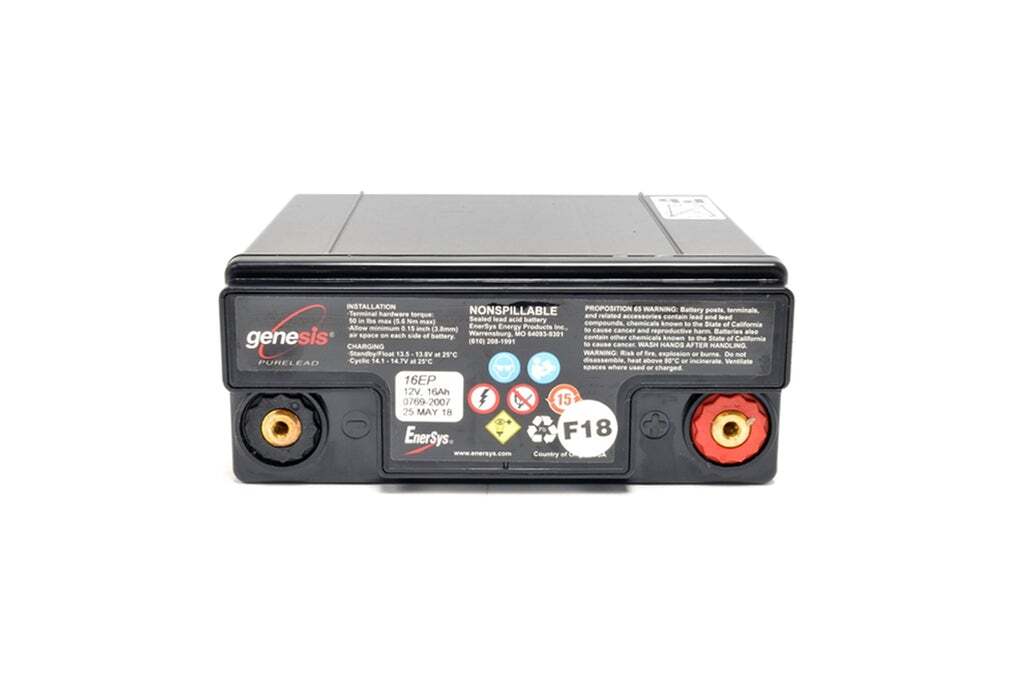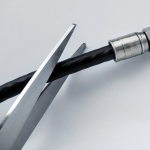
A battery is a chemical container. Its capable of storing and providing electrical energy as needed until exhausted. After it is exhausted, it must be recharged or discarded.
Batteries always have some level of resistance due to materials used not being perfect conductors (due to cost). When a battery is new, the internal resistance to discharge and charging is low.
Using Ohms law, Voltage = current * resistance, the more resistance of the battery, the less voltage is transferred to the load. Likewise, when charging, the higher the resistance, the less current put back into the battery.
Batteries with high internal resistance tend to fail providing high current loads.
Low resistance = higher current capacity
High resistance = lower current capacity
Many smart battery chargers will refuse to charge batteries with high resistance.
A battery with high resistance may still have an acceptable capacity, yet but unable to power the high current load for which it was intended.
When testing batteries, specifically UPS batteries, a battery may appear to be good with a voltmeter, and even some basic load testing. Its only by checking with a high current load, or a battery resistance tester that you are able to judge a battery.
Tools I use to load test and resistance test batteries:
West Mountain Radio CBA IV/V http://www.westmountainradio.com/product_info.php?products_id=cba5

Programable Battery Load Tester

The CBA is much more than a simple battery voltage tester or a battery load tester. Unlike a simple load tester the CBA will test virtually any type or size of battery, any chemistry, any number of cells up to 55 volts. For the first time and for a reasonable price, anyone can do scientific tests of their batteries by letting their computer do all the work.
The CBA is capable of higher test rates than other testers: up to 40 amps or 150 watts, whichever is higher. It not only tests the total amount of energy stored in a battery (capacity in amp-hrs), but it graphically displays and charts voltage versus amp-hours.
Unlike a resistor load it has an electronic constant current load that is controlled both with software and electronics.
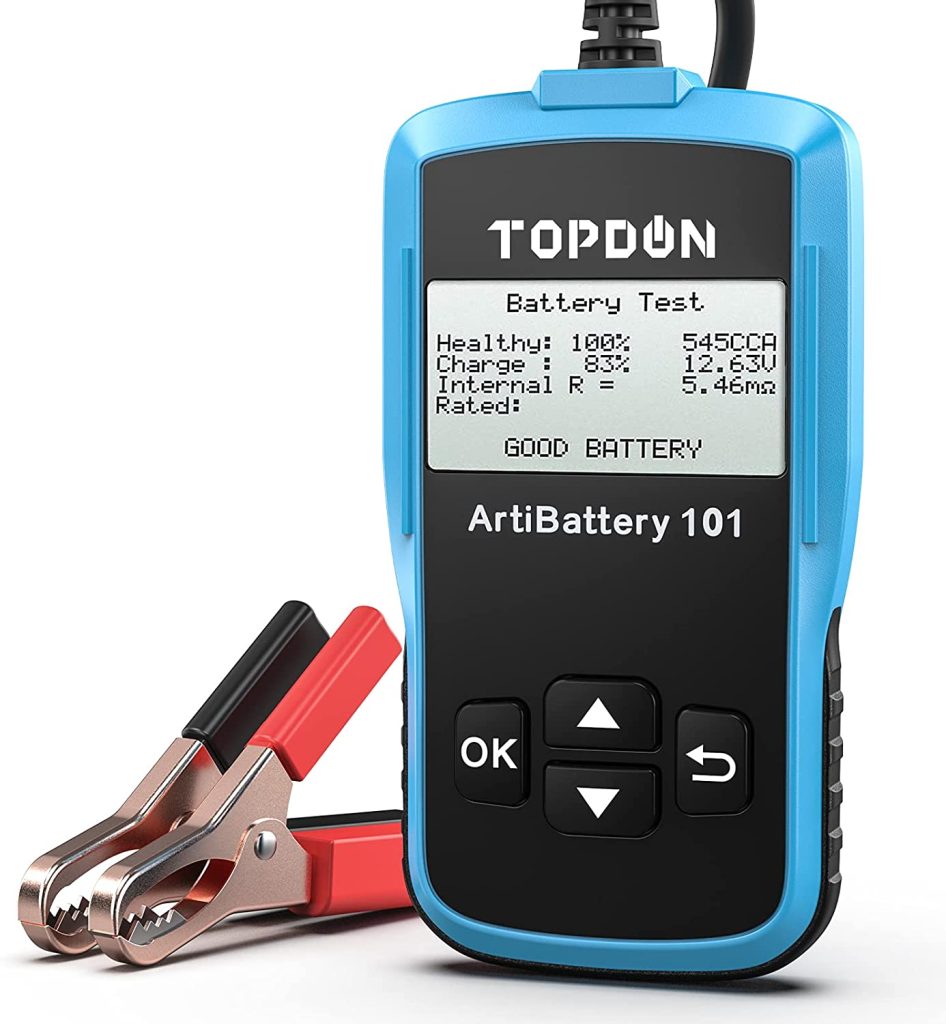
TOPDON AB101 (There are many versions of this same box, this is just the one I picked)
In a recent solar project, I had a string of 4 Genesis EP16 batteries, providing 64Ah of battery. This install was unable to keep running overnight. I suspected one or more batteries was at fault, but my traditional load tester was unable to point at exactly what was wrong.
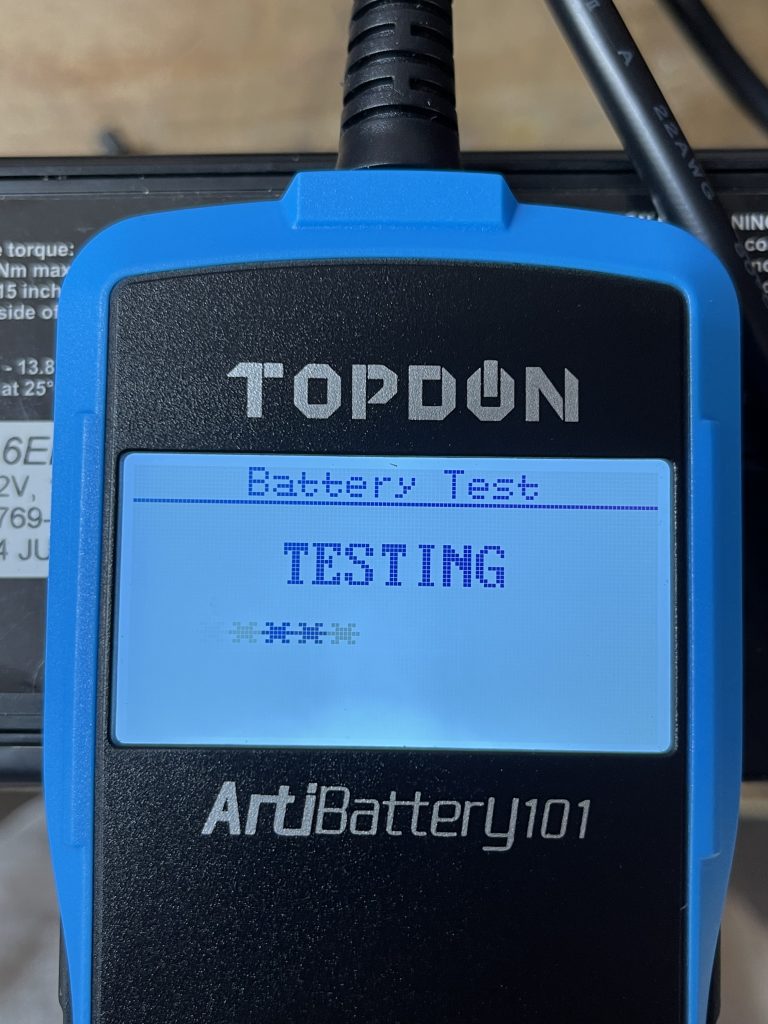
In a recent solar project, I had a string of 4 Genesis EP16 batteries, providing 64Ah of battery. This install was unable to keep running overnight. I suspected one or more batteries was at fault, but my traditional load tester was unable to point at exactly what was wrong.
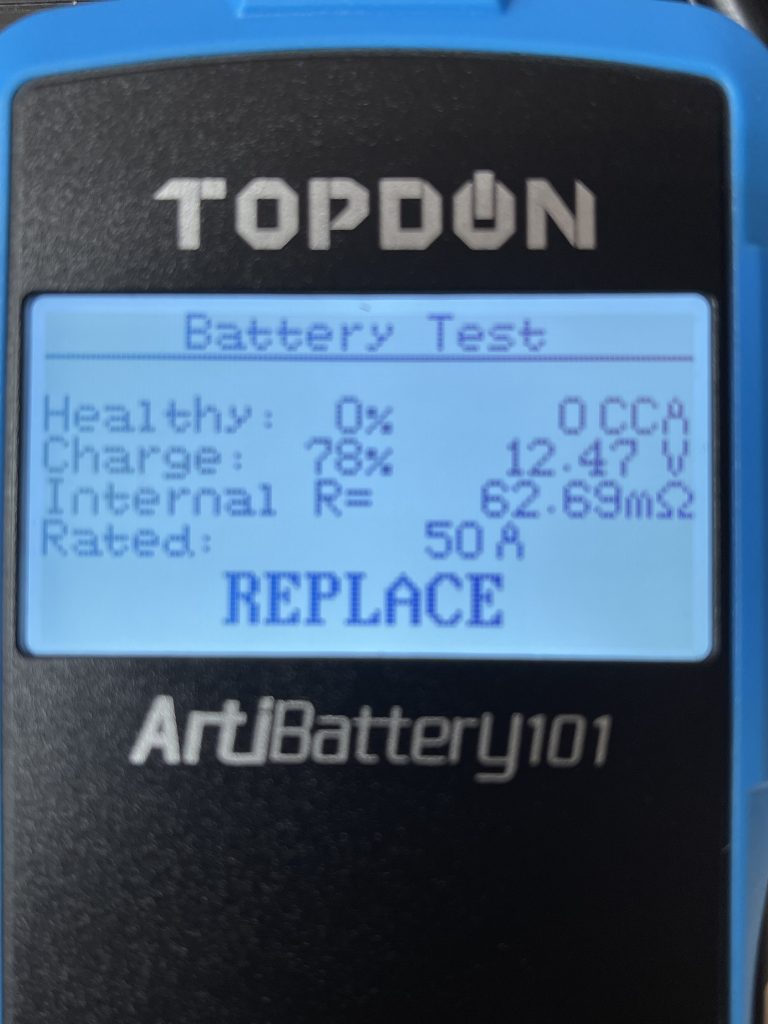
Spec sheet shows factory Internal resistance of 19.1 mOhm, Two of the batteries showed Internal resistance of about 20, while the other two showed as 62.69mOhm. After changing these two batteries, the system is once again working as it should.
